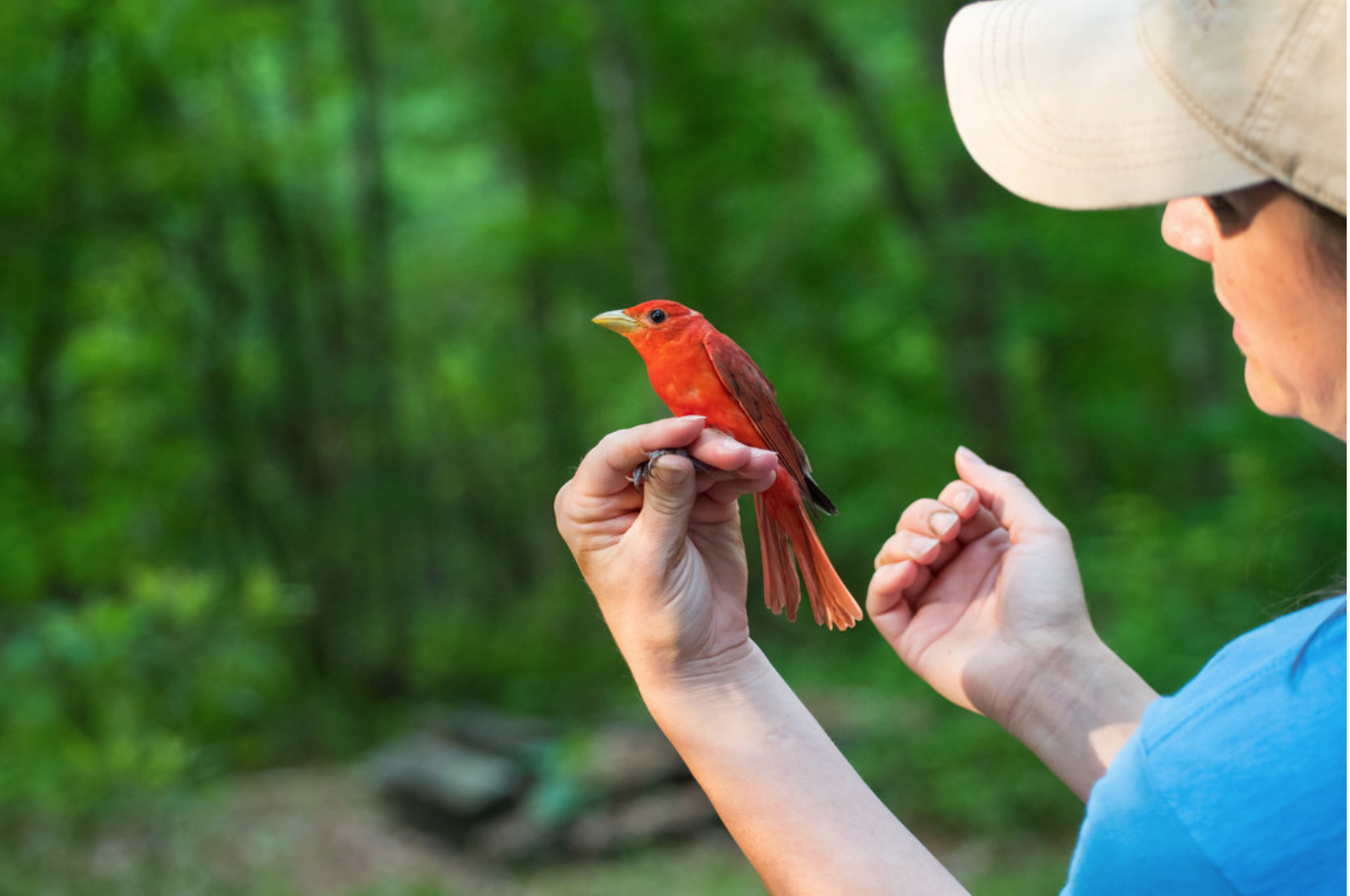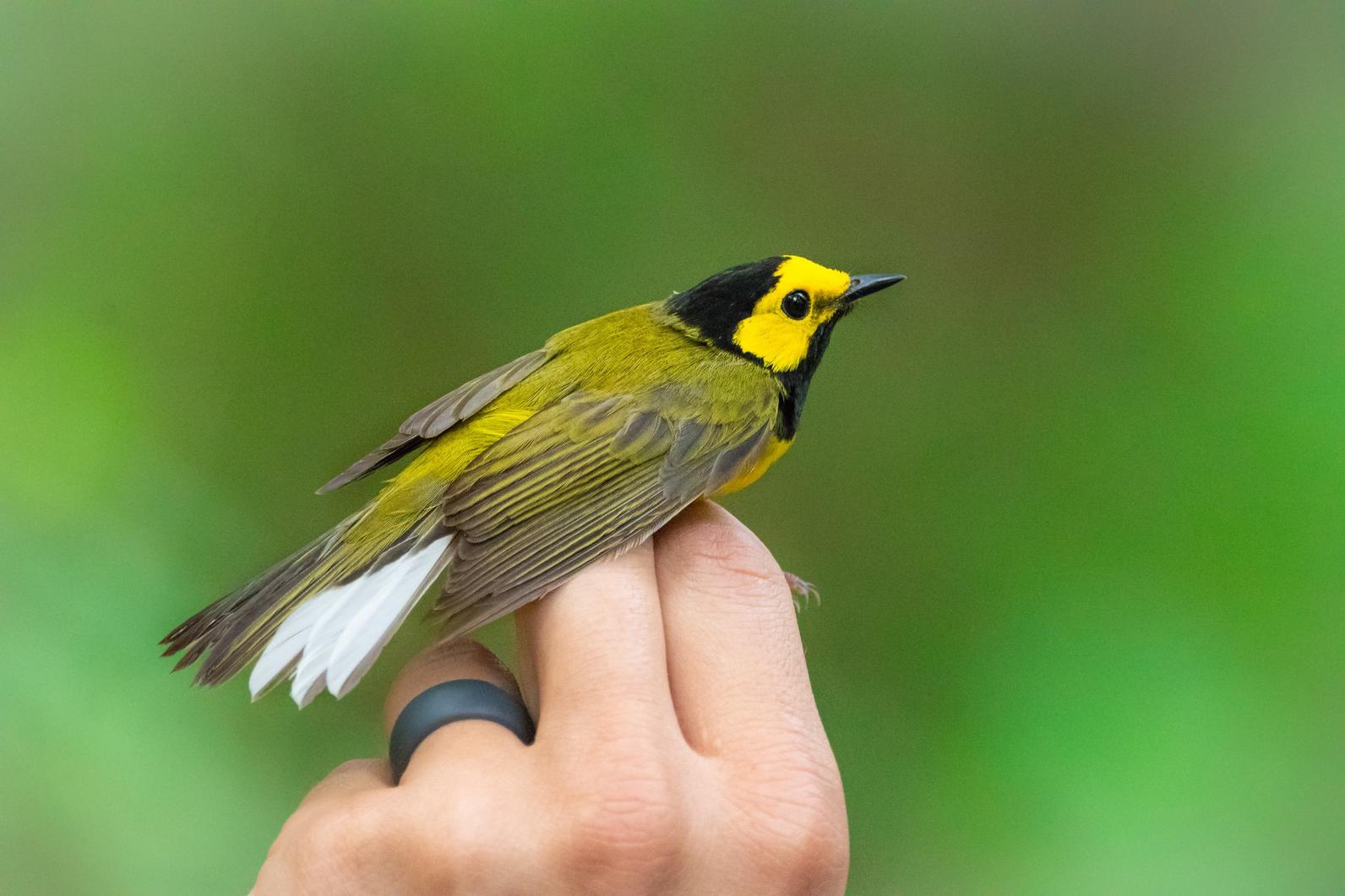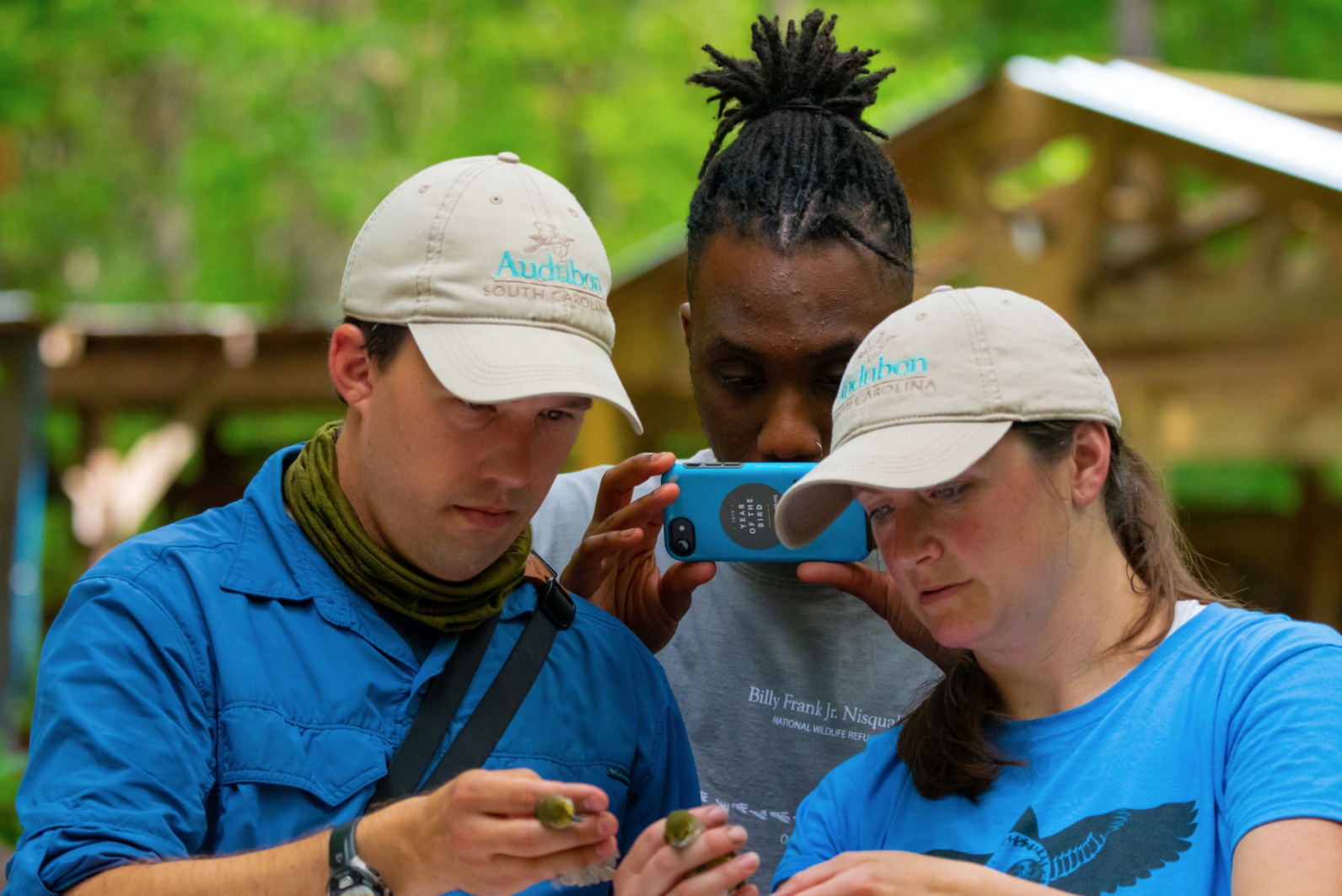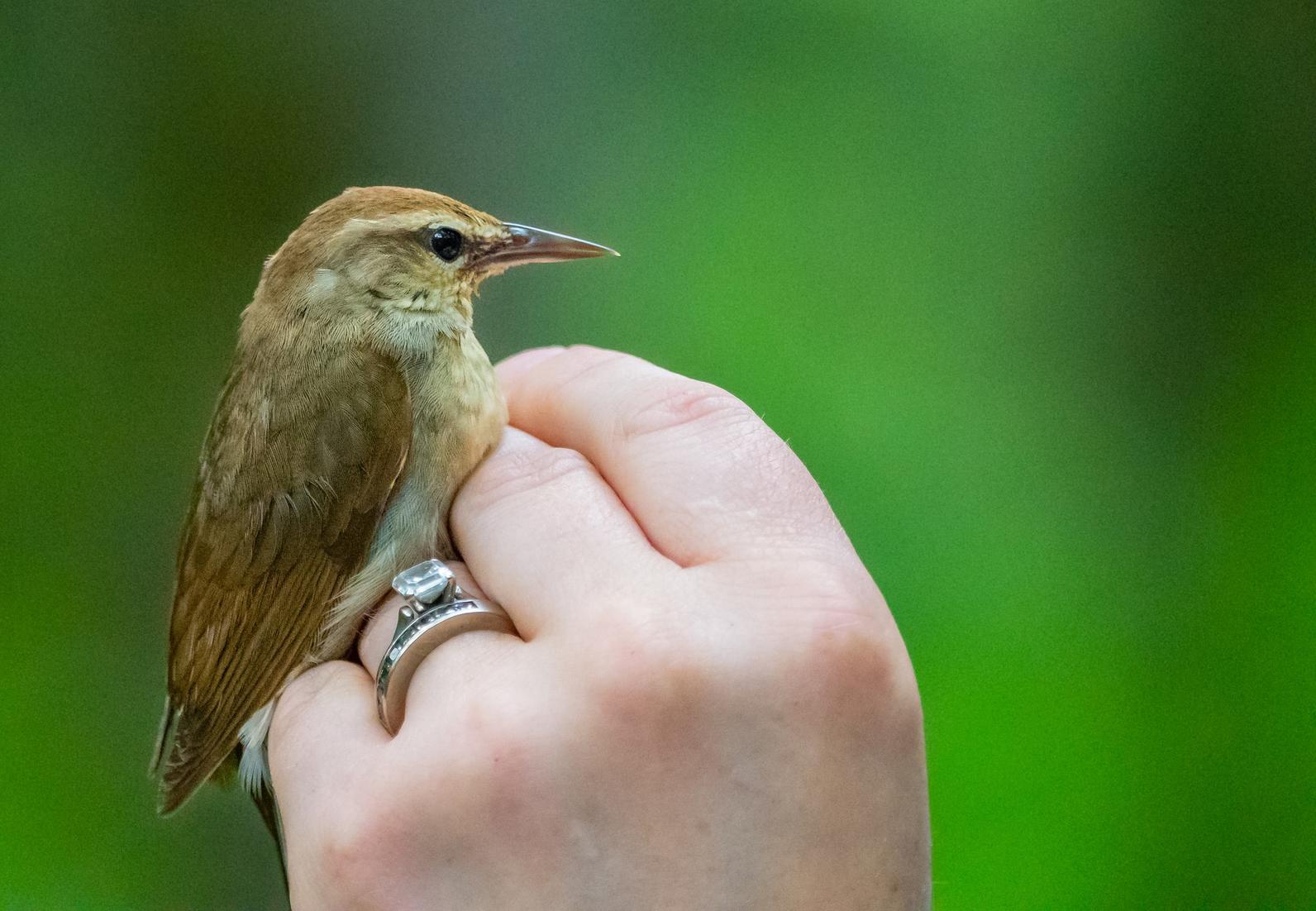On May 14, Audubon South Carolina naturalists Jennifer Tyrrell and Matt Johnson, along with intern Chris Williams, rolled out of their beds at 4:00 a.m., hyper-charged for the first day of the 2018 summer bird-banding season. By 5:30 a.m., the crew had finished setting up a data-gathering unit on the edge of Audubon’s Francis Beidler Forest. By 7:00 a.m., when the air had turned muggy and the mosquitoes were buzzing, the trio was banding their first bird: a brilliant-red male Summer Tanager.
On what they would normally consider a good day, the group expects to band and release about nine or ten birds. However, by noon on this first day of summer banding, the team had already tagged 15 birds: three Summer Tanagers, four White-eyed Vireos, a Red-eyed Vireo, two Pileated Woodpeckers, a Hooded Warbler, a Northern Cardinal, a Blue-gray Gnatcatcher, an Acadian Flycatcher, and the biggest “get” of the day: an elusive Swainson’s Warbler!

For two years, Audubon South Carolina has participated in MAPS, or Monitoring Avian Productivity and Survivorship, a program that enlists individuals and organizations from across the continent to track and collect data on birds in their communities. On designated days between May and August, each group sets up 10 nets within a walkable radius—checking the nets every 20 to 30 minutes and bringing any captured birds back to the data station. There, they record information about the bird’s health and survivorship—including gender, estimated age, wing size, weight, breeding condition, and general health, as well as capture date and location—before attaching a band to the bird’s leg and releasing it back into the wild.

Since 1989, MAPS stations across the United States and Canada have generated more than 2 million capture records. This data provides a big-picture idea about bird habitats and behaviors across North America over time, as well as insights into local breeding populations, changes to resident birds, and the effects that factors such as climate change and natural disasters have on local avian populations.
“Looking at our breeding bird population over time provides important information about survivorship, site fidelity, species distribution, and the success of breeding,” explains Jennifer Tyrell, Community Coordinator for Audubon South Carolina. “Because groups across the country participate in MAPs, we get to compare data from our sites with bird populations around the continent. The changes we see in our breeding birds may or may not be the same as what other MAPS participants are noticing at their sites.”

While Matt Johnson, Audubon South Carolina’s Director of Bird Conservation and Engagement, believes that a national assessment of avian species is important, he is also interested in how local breeding birds are doing in the swampy ecosystem of the Lowcountry’s bottomlands. “Beidler Forest has an incredibly dense and diverse population of birds,” says Matt. “This tangled, thick forest along the edge of the swamp is a buffer zone which protects water quality, but it’s also important for breeding birds. We want to know how species use this area, particularly during the summer months. In July, when birds like the Prothonotary Warbler leave the swamp, do they come here? How do natural buffers impact bird populations? These are all questions we hope to better understand through this project.”
Later that afternoon, Matt and Jennifer were thrilled to discover a Swainson’s Warbler in one of their nets. The Swainson’s Warbler is not only scarce, but skillfully evasive, preferring to live close to the ground, hidden among the shadows of the thickets and blending in with its surroundings. In 2017, the pair recaptured a male Swainson’s Warbler that had first been banded nine years before, making it the oldest of the species to have even been recorded. The warbler they found this morning was a much younger female, and they hope she is the mate for her distinguished counterpart. After collecting data on the small bird, Jennifer placed it in the open palm of her hand and watched as it flew away, wearing its new aluminum band. The bird landed on the ground, dancing and flitting among the dried leaves and gnarled vines, before disappearing into the brush. Home again.
You can see all of my photos from the day on Flickr. To learn more about this project, or to volunteer with Audubon South Carolina’s banding efforts, visit: http://sc.audubon.org/.














